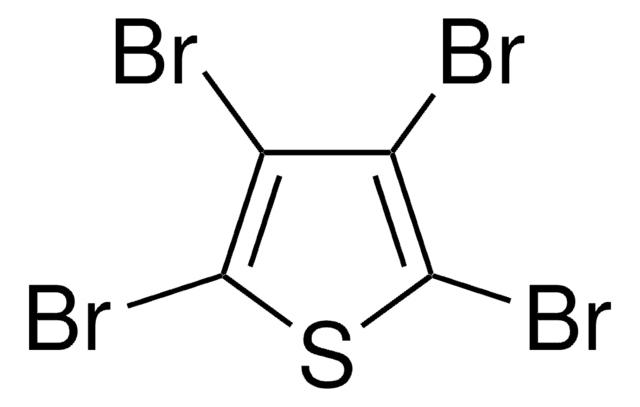Kluczowe dokumenty
About This Item
Polecane produkty
Poziom jakości
Próba
97%
współczynnik refrakcji
n20/D 1.5409
tw
100-102 °C/10-11 mmHg
gęstość
1.209 g/mL at 25 °C
temp. przechowywania
−20°C
ciąg SMILES
COc1cscc1OC
InChI
1S/C6H8O2S/c1-7-5-3-9-4-6(5)8-2/h3-4H,1-2H3
Klucz InChI
ZUDCKLVMBAXBIF-UHFFFAOYSA-N
Opis ogólny
Zastosowanie
Hasło ostrzegawcze
Warning
Zwroty wskazujące rodzaj zagrożenia
Zwroty wskazujące środki ostrożności
Klasyfikacja zagrożeń
Acute Tox. 4 Oral
Kod klasy składowania
10 - Combustible liquids
Klasa zagrożenia wodnego (WGK)
WGK 3
Temperatura zapłonu (°F)
224.1 °F - closed cup
Temperatura zapłonu (°C)
106.7 °C - closed cup
Środki ochrony indywidualnej
Eyeshields, Faceshields, Gloves, type ABEK (EN14387) respirator filter
Wybierz jedną z najnowszych wersji:
Masz już ten produkt?
Dokumenty związane z niedawno zakupionymi produktami zostały zamieszczone w Bibliotece dokumentów.
Klienci oglądali również te produkty
Produkty
Organiczna elektronika obiecuje rozwiązania w zakresie energii odnawialnej przewyższające technologię opartą na krzemie.
The soaring global demand for energy, coupled with the limited supply of fossil fuels, has increased the need for renewable, low-cost energy sources. Organic electronics have shown great promise for applications in lighting, power, and circuitry, with rapidly improving performance already surpassing that of amorphous silicon-based counterparts.
Nasz zespół naukowców ma doświadczenie we wszystkich obszarach badań, w tym w naukach przyrodniczych, materiałoznawstwie, syntezie chemicznej, chromatografii, analityce i wielu innych dziedzinach.
Skontaktuj się z zespołem ds. pomocy technicznej

